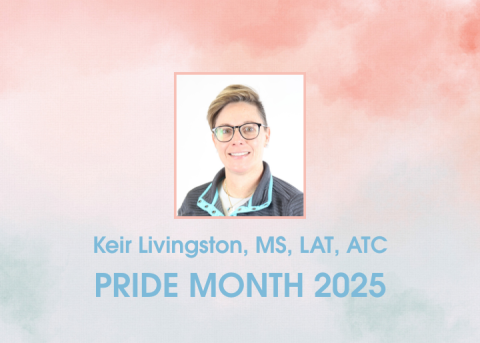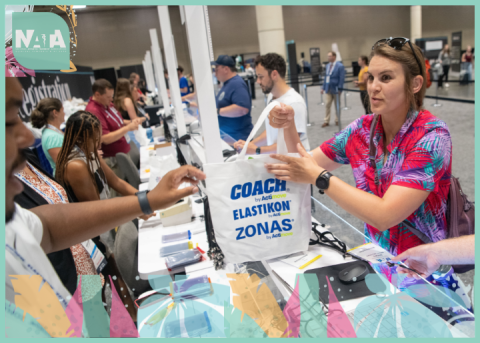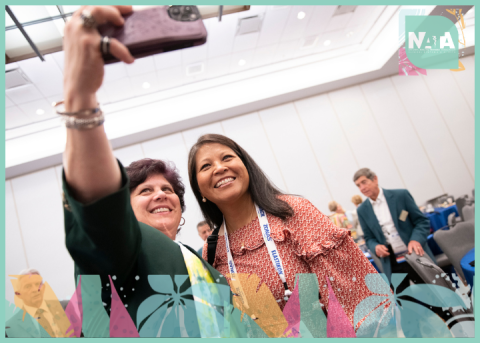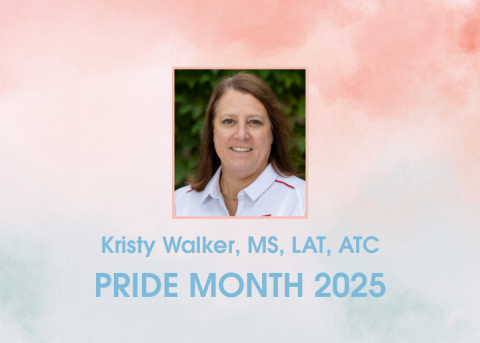
The NATA Hall of Fame is the apex of member recognition, celebrating a select group of athletic trainers who have advanced the profession and exemplified what it means to live a life of service.
More than a jacket, plaque and accolades, the NATA Hall of Fame is an honor bestowed on those who have dedicated countless hours honing their skills, mentoring the next generation of ATs and leaving a lasting legacy in the athletic training profession.
The May NATA News features the class of 2024, highlighting their careers and volunteer achievements, while giving insight into their lives as leaders in the profession.
The class of 2024 will be inducted into the NATA Hall of Fame during the 75th NATA Clinical Symposia & AT Expo in New Orleans.
In this post, the inductees discuss their memorable moments in the profession.
Douglas J. Casa, PhD, ATC, FNAK
Sitting at a meeting in Lausanne, Switzerland, at the world headquarters for the International Olympic Committee in September 2021 and hearing my former PhD student, Yuri Hosokawa, PhD, ATC, give a talk about her role as the coordinator of heat care services for the Tokyo Olympics/Paralympics Games is my most memorable professional moment. Yuri gave this talk to help the committee review and learn from our heat mitigation efforts for the Tokyo Games. I started to tear up and was shaken up a little while listening to her knowing that this brilliant, amazing, passionate, caring and inspirational leader was completely in command of a room of some of the most prestigious sports medicine leaders in the world. I was enormously proud and thrilled that my path that began 39 years ago arrived at this moment. Yuri represented the army of a new generation of scientists and medical professionals who would go to the ends of the earth to fight for policies and strategies that maximize the health and safety of athletes, warfighters and laborers.
Ray Castle, PhD, LAT, NREMT
This is a tough one to answer as I just look at every day as an opportunity that a “kid from St. Joseph, Louisiana” has been fortunate to experience the profession since November 1987. Some definite high points would be seeing my first team, the Louisiana State University (LSU) women’s track team, win the 1988 NCAA Outdoor Championships; selection to the U.S. Olympic Committee medical staff for the 2003 Pan American Games in Santo Domingo, Dominican Republic; traveling with the USA women’s bobsled team on the 2004 World Cup Tour; working with fantastic staff and students at LSU for 20 years; bringing LSU athletic training students up to volunteer at the Boston Marathon; and working with fantastic and passionate professionals on various committees and associations, are just a few.
But the real rewards/moments are where I have seen my work with others payoff, such as having opportunities to create new jobs; working with Gerard White, MEd, LAT, ATC, and other Louisiana Athletic Trainers’ Association leadership and colleagues for unanimous passage of Louisiana’s AT licensure practice act in 2014; placing an AT on tour with recording artist Drake; or conducting sports emergency care courses at LSU with Ron Courson, PT, ATC, NRAEMT, and Lovie Tabron, MS, LAT, ATC, and seeing its impact on health and safety.
There are also the one-on-one moments that have come from parents thanking me for caring for their child, seeing former athletes who tell others that I took care of them, to visiting with my former AT students and getting to hear about their successes in their personal lives and professional endeavors. Although they may not realize it, they each have enriched my life in a positive and profound way.
With all that said, I have to give a shoutout to my former LSU athletic training student Beth Schroeder, who got married May 16, 2003, just after graduating from LSU; if not for her wedding, I wouldn’t have run into Katherine, my amazing rockstar wife since Jan. 3, 2004!
Darryl Patrick Conway, MA, LAT, ATC
This is a tough one to answer because there are so many that stand out to me. I would say that my most memorable moments in the profession have come from the opportunities to take care of student athletes when they are at their lowest points, whether it be because they are paralyzed on the field, have suffered horrific season/career-ending knee dislocations, are dealing with serious mental health and/or substance abuse challenges, are on the edge before being kicked out of school and/or managing personal issues or significant family challenges. Being able to work with them, talk to them, mentor them and learn from them every day through all their ups and downs has been special to me. Knowing that you were able to make a small difference in their careers and lives, watching them recover, watching them grow up physically, mentally, emotionally and spiritually before your eyes and watching them thrive in their chosen career and come back to visit with their families and talk to their families about what their time with you meant to them has been priceless. Creating those “lifetime customers” that high‐level executives so frequently talk about has been special and something that can never be replaced; much more memorable than any victory on the field. Athletic trainers can be considered lifesavers, not always so much in the traditional sense like police, fire, emergency medical services, physicians, nurses, etc., but so many times with the little things that are done and frequently go unnoticed to many.
Kimberly S. Peer, EdD, ATC, FNATA
Although I’ve been privileged to have had many memorable moments in my career, one of the most memorable moments was when the Athletic Training Professional Values became part of the NATA Code of Ethics. After working on professional ethics for a huge part of my professional career, this adoption validated the importance of professional values on the profession.
Another equally important moment was when I was awarded the NATA Sayers “Bud” Miller Distinguished Educator Award as it exemplified the value the profession places on advancing the profession through education and the impact we, as educators, have on future generations of athletic trainers.
Jiro Shikakura, MS, ATC
That’s when I first learned about athletic trainers. The encounter was shocking. It was in 1971 when the Utah State University football team came to Japan and played an all-star team of Japanese universities. At the time, I was a student manager of the Waseda University football team and a member of the student committee of the Eastern Japan College Football Federation. As part of my job, I was assigned to support the Utah State University side. It was then that I got to know athletic trainers for the first time. They taped, stretched and provided first aid. Although there were a small number of athletic “trainers” in Japan at that time, they were little known to the public because their primary job was to massage people in professional baseball. I was initially interested in learning how to become an athletic trainer and did a lot of research in Japan but couldn’t find information on them. Therefore, I decided to study athletic training in the U.S.
Craig Alan Voll Jr., PhD, ATC, PT
From a clinical perspective, without a doubt it was being part of the team that won the Big Ten Championship and went to the 2001 Rose Bowl.
From a leadership standpoint, there are a couple! First was the passing of HEA 1467 into law in 2011. This codified into law the undeniable right for athletic trainers in the state of Indiana to be reimbursed by third-party payors for their services. The law made it illegal for an insurance company to deny payment for a covered service simply because it was performed by an athletic trainer.
Second was successfully advocating across the country for the need to split District Four into two districts and thus forming a new District Eleven. This division created 27 new formal leadership opportunities within the association; 27 more leaders who will get the opportunity to hone their leadership skills and bring new ideas to current discussions; 27 more members each year who may catch the “service bug” and continue to give back to the association by chairing a committee, serving on a task force or work group or running for elected office at the state, district or national level.
Third, helping to develop our association’s six diversity, equity, inclusion and access (DEIA) commitments and ensuring they become infused in all aspects of NATA. Part of that included helping create the NATA DEIA Council, which provides the opportunity for the council chair to participate in all open and closed board of director meetings, thus ensuring there are no blind spots in board discussions.
However, my most cherished memorable moment was receiving a handwritten letter from Chuck Kimmel in the mail with his copy of NATA News following the decision to split District Four and create District Eleven.
Cari L. Wood, LAT, ATC
There are so many! Being around secondary school-aged kids is so fun. They’re inquisitive, quirky and there’s never a dull moment. Some of my favorite memories come from the field trips I would take students on. Not only did I get to spend time showing off this wonderful career, but I also benefited from the tours of facilities we took, the schools visited and all the opportunities to meet and learn from athletic trainers in all sorts of settings and positions throughout the Pacific Northwest. Shout out to all the ATs who allowed us to visit and helped give my students a great experience! Most athletes say the time spent on bus trips with their teammates is the most memorable – I wholeheartedly agree!





